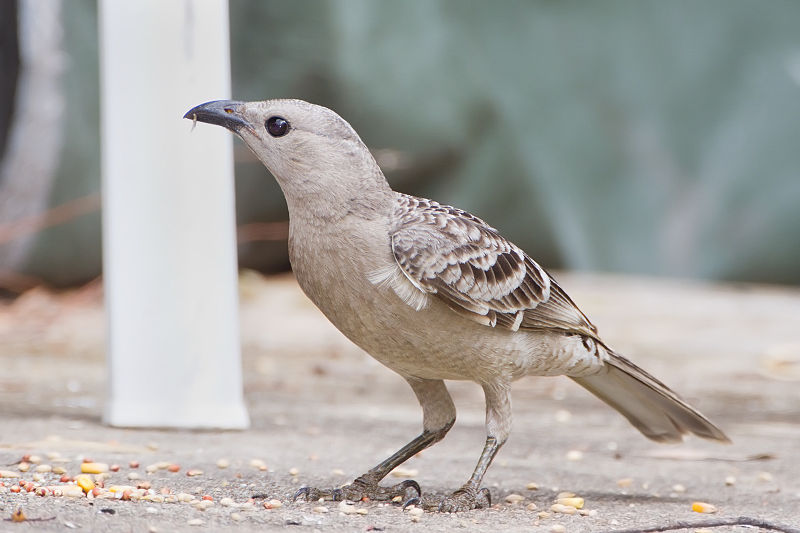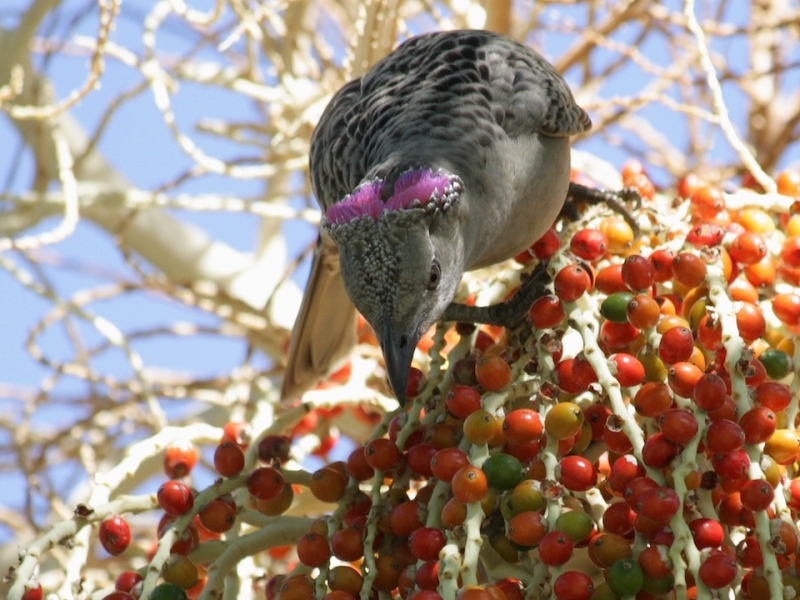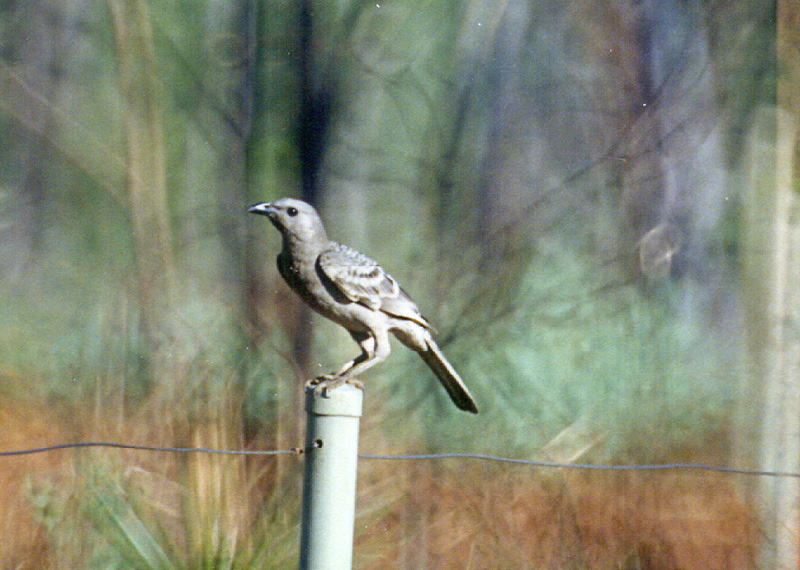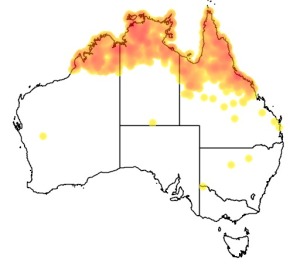Colours
Distinguishing features
It is a large bowerbird that is fawny-grey in colour. Males have a small but conspicuous pink crest on the nape of the neck that is on view to females during courtship displays. (Wikipedia)
Size
- Up to 38 cm (Length of specimen)
- From 32 cm to 38 cm (Length of specimen)
Wingspan
- Wingspan data is not yet available.
Synonyms
Distribution
Distribution and habitat preferences
It is a common and conspicuous resident of northern Australia, from the area around Broome across the Top End to Cape York Peninsula and as far south as Mount Isa.
Favoured habitat is a broad range of forest and woodland, and the margins of vine forests, monsoon forest, and mangrove swamps. (Wikipedia)
resident of northern Australia, from the area around Broome across the Top End to Cape York Peninsula and as far south as Mount Isa. Favoured habitat is a broad range of forest and woodland, and the margins of vine forests, monsoon forest, and mangrove swamps. (Wikipedia)
Behaviour
The male builds the largest bower of all bowerbirds. It is a twin-walled avenue-type bower approximately 1 metre long and 45 cm high. It is typically located under a shrub or leafy branch. The ends of the bower are scattered with white and green objects - stones, bones, shells and leaves and small man-made objects such as plastic and bottle caps. Within the bower itself is sometimes placed clear glass. (Wikipedia)
The male builds the largest bower of all bowerbirds. It is a twin-walled avenue-type bower approximately 1 metre long and 45 cm high. It is typically located under a shrub or leafy branch. The ends of the bower are scattered with white and green objects - stones, bones, shells and leaves and small man-made objects such as plastic and bottle caps. Within the bower itself is sometimes placed clear glass.
Uniquely among bowerbirds, groups of young males will attend a single bower concurrently, "practising" their bower-building skills prior to establishing their own bower for mating purposes. (Wikipedia)







